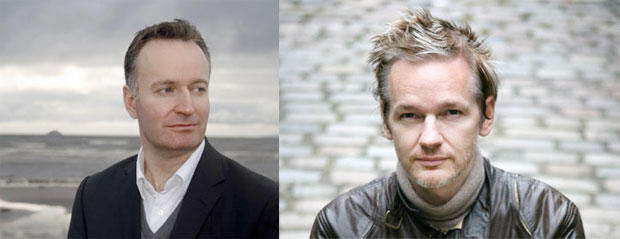Andrew O’Hagan, the once anonymous ghostwriter who collaborated with WikiLeaks Founder Julian Assange on his abortive 2011 autobiography, broke his long silence on the project this weekend. Putting to bed over 26,000 words on the subject of his months working with Assange, the hacker is described by turns as funny, lazy, courageous, paranoid, narcissistic, driven by spectacle, dishonest, and manipulative. The story focuses on the collapse of the one of the most high-profile books deals of recent times—2.5 million with the publisher Canongate.
At times reading like an account of a bad break up, O’Hagan fixates on the hacker’s behaviors and characteristics that have lingered with him. He notes how Assange ate almost exclusively with his hands multiple times, and repeatedly talks about how he knew Assange didn’t want an autobiography ghostwritten—he wanted to write a manifesto. At one point, O’Hagan criticizes Assange for seeking the spotlight, noting that while dumping thousands of secret documents on the web makes a splash, it meant that the press did not have time to adequately examine them.
Assange’s demands though, offer some explanation as to why O’Hagan might have been so affected by the experience. At one point the writer recounts Assange’s refusal to read the first draft of the book, all the while insisting that it would have to be entirely rewritten. During these negotiations, Assange also decided O’Hagan should get on a helicopter with him to travel to a book fair to promote the book he was actively seeking to destroy. Assange acted like a child, and O’Hagan was quick to point that out, too.
While very little of the biographical information that was supposed to be published in the autobiography made it into O’Hagan’s piece, some of that information can be found in the e-flux interview between curator Hans Ulrich Obrist and Assange. One gets a better sense of Assange’s personality as a hacker, (at least three paragraphs are dedicated to his teenage years hacking), and his values as informed by early web culture. O’Hagan’s interpretation of these values—Assange’s lauding of young hackers, for example, is seen as an inability to work with others as equals—only adds to the interview. Often, Assange represents himself exactly as O’Hagan describes him.
The two pieces are good companions. Readers get a clearer sense of the scope of Wikileaks projects and their relationship to the media. When described by Assange, we see that relationship is often shockingly sophomoric. When described by O’Hagan, we understand what’s informing Assange’s particular brand of vision, and why it can be so dangerous.



Comments on this entry are closed.